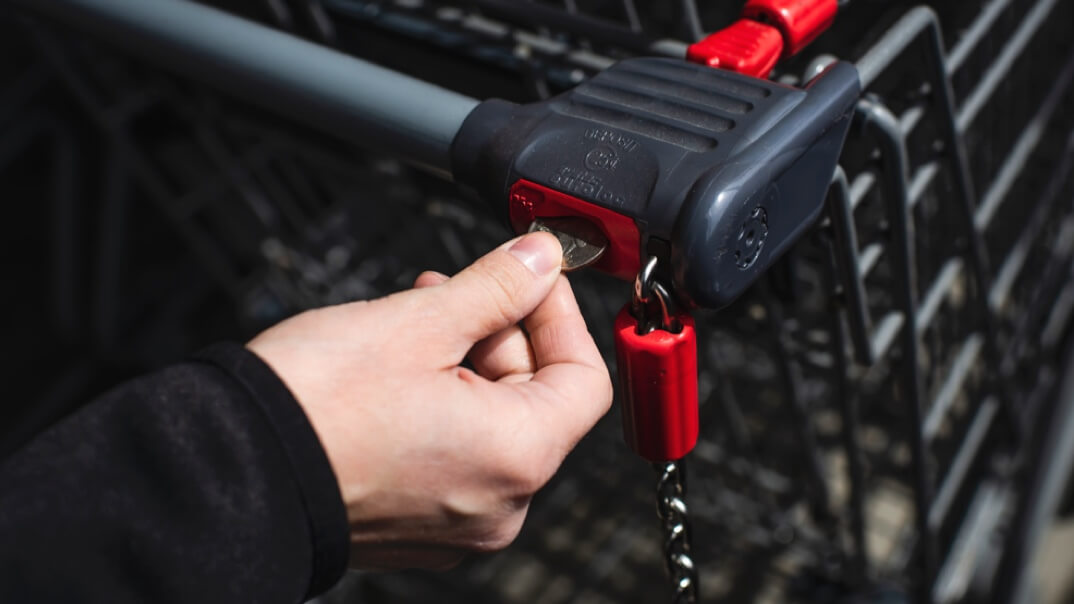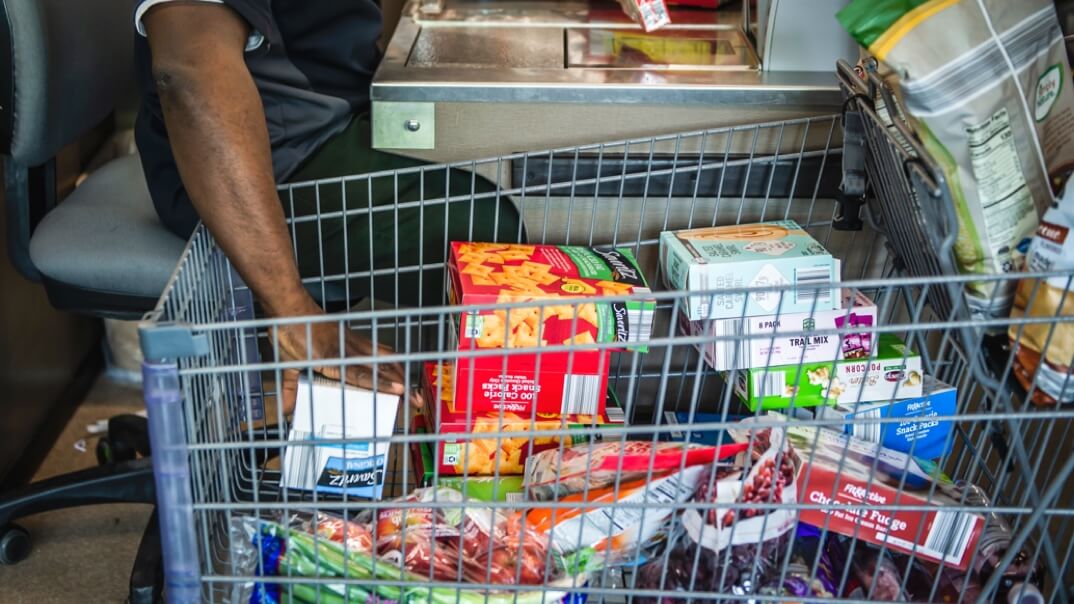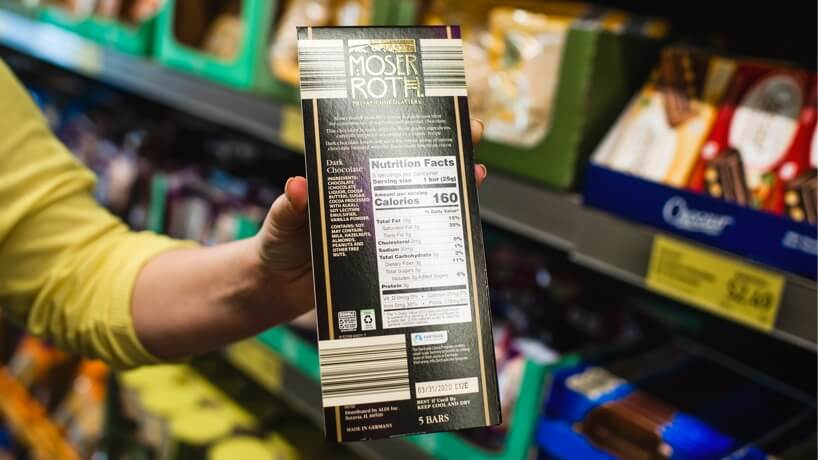Running a supermarket in America has never been harder.
Profits are razor thin. Online shopping and home delivery are changing the way people buy their food. Dollar stores and drugstores are selling more groceries. Pressures are so intense that regional chains like Southeastern Grocers, the owner of Winn-Dixie and Bi-Lo, filed for bankruptcy. Large companies increasingly control the industry, which had long operated as a dispersed network of smaller, local grocers. And even Walmart — the largest player of all — faces new competition from Amazon, which bought Whole Foods in 2017 for almost $14 billion.
But when Walmart’s US CEO Greg Foran invokes words like “fierce,” “good” and “clever,” in speaking almost admiringly about one of his competitors, he’s not referring to Amazon. He isn’t pointing to large chains like Kroger or Albertsons, dollar stores like Dollar General or online entrants like FreshDirect and Instacart.
Foran is describing Aldi, the no-frills German discount grocery chain that’s growing aggressively in the United States and reshaping the grocery industry along the way.

New customers may be jolted at first by the experience of shopping at an Aldi, which expects its customers to endure a number of minor inconveniences not typical at other American grocery stores. Shoppers need a quarter to rent a shopping cart. Plastic and paper bags are available only for a fee. And at checkout, cashiers hurry shoppers away, expecting them to bag their own groceries in a separate location away from the cash register.
But Aldi has built a cult-like following. When it enters a new town, it’s not uncommon for hundreds of people to turn out for the grand opening. The allure is all in the rock-bottom prices, which are so cheap that Aldi often beats Walmart at its own low-price game.
"I am willing to do the extra work because the prices are amazing,” said Diane Youngpeter, who runs a fan blog about the grocer called the Aldi Nerd and an Aldi Facebook group with 50,000 members. “There’s a lot of Aldi nerds out there,” she said. “I didn’t realize that there were so many of us.”
Aldi has more than 1,800 stores in 35 states and is focused on growing in the Midwest, the Mid-Atlantic, Florida and California. It’s on track to become America’s third largest supermarket chain behind Walmart and Kroger, with 2,500 stores by the end of 2022. Its close competitor Lidl, another German grocer with a similar low-cost business model, is racing to grow in the United States, too.
Advertisement
Amid their aggressive growth push, the two discount chains have forced the rest of the grocery industry to make big changes to hold onto their customers. Aldi has even encroached on Walmart’s turf— literally. As if it were throwing down a gauntlet, in October Aldi opened a store in Bentonville, Arkansas, just a mile from Walmart’s corporate headquarters.
"I never underestimate them," Foran said at an industry conference in March. “I've been competing against Aldi for 20-plus years. They are fierce and they are good.”
But as competitors fight back, can the company hold on to its low-cost advantage? Can it stick to what it calls the “Aldi way?”
The Aldi way: How the chain beats Walmart on price
There’s no secret to how Aldi keeps its prices so low: The company strips down the shopping experience in an unapologetically and brutally efficient way.
“They are able to drive out every fractional cent of cost without compromising on quality,” said Katrijn Gielens, professor of marketing at UNC's Kenan-Flagler Business School.
Aldi is privately held, and through a spokesperson, the company declined to make its executives available for interviews. But Gielens estimates that its operating costs are about half those of mainstream retailers. The company also operates at a lower profit margin than competitors, she said.
From a customer’s point of view, the distinct experience starts at the shopping carts, which Aldi keeps locked up.
25-cent deposit
Aldi locks up its shopping carts to save on labor costs. Customers deposit a quarter, which they get back when they return the carts.

Rather than employ a team of runners to retrieve carts from the parking lot all day, Aldi expects its customers to return carts to the store after each shopping trip. It forces that behavior by charging customers a quarter deposit that they get back when they return their carts.
This is not a novel idea. Several American grocers tried it in the 1980s and 1990s, but abandoned the practice after it annoyed customers who had come to expect more services of their grocery stores. Aldi, which opened its first US store in Iowa in 1976, has stuck with the model, insisting the deposit system is core to its low-price strategy. The store’s most die-hard fans even celebrate it, heralding when Aldi offers “quarter keeper” keychains from time to time. Some fans even knit their own versions. A search on Etsy for “Aldi quarter keeper” turns up more than 500 results.
“I never underestimate them. I've been competing against Aldi for 20-plus years. They are fierce and they are good.”
The quirks don’t stop there.
When customers enter stores, they’ll notice they look almost nothing like traditional supermarkets in the United States. With five or six super-wide aisles, Aldi only stocks around 1,400 items — compared to around 40,000 at traditional supermarkets and more than 100,000 at Walmart supercenters.

For time-strapped shoppers like Youngpeter, Aldi’s simple layouts and limited selection save her time. “I’m a busy mom. I don’t have time to navigate a huge grocery store with kids begging to get out and go home,” she said. “I can get in and out of an Aldi in no time. I’m not sifting through 50 different varieties of salsa.”
And good luck trying to find major name brands. More than 90% of the brands Aldi sells are its own private labels like Simply Nature organic products, Millville cereals, Burman’s ketchup and Specially Selected bread. (If this sounds like Trader Joe’s, that’s not a coincidence. The two companies share a common history.)
The packaging on these items sometimes looks so similar to the brand-name alternatives that customers find themselves doing a double-take. Aldi's Honey Nut Crispy Oats, for example, come in box that's nearly the same shades of orange, yellow and brown as General Mills’ Honey Nut Cheerios, and with a similar font, too. Aldi sells its Tandil laundry detergent in an orange plastic jug with blue and yellow graphics reminiscent of Tide. The Millville Toaster Tarts, an Aldi house brand, look strikingly similar to Pop-Tarts — but a 12-pack of the Millville version is $1.85 while a 12-pack of Pop-Tarts costs $2.75.

“I’m like, ‘these corn flakes are just as good, if not better, than the ones that have a chicken on the box! They’re the same exact ones,’” said Allison Robicelli, a food writer in Baltimore who describes herself as an Aldi loyalist.
Although it may not be obvious at first glance, Aldi employs several key design details that maximize efficiency at checkout, too. On many of its products, barcodes are either super large or are printed on multiple sides to speed up the scanning process. After groceries are rung up, there’s nowhere for them to linger. The cashier drops items directly into a shopping cart below. Aldi doesn’t waste time bagging groceries. Customers must wheel away their shopping carts to bag their own groceries in a separate section at the front. Since stores don’t offer free bags, customers often scour the store for empty cardboard boxes to use instead.
“Those lines fly. You’re not waiting for people to bag. They’re not messing around there,” said Robicelli. “Once you see that kind of efficiency, it makes going to other supermarkets really annoying and really tedious.”
Speedy cashiers
Another labor-saving trick: Cashiers don’t bag groceries. Instead, they drop items directly into customers’ carts.

Aldi has other tactics to keep real estate and labor costs down. Size is one factor. A Walmart supercenter averages around 178,000 square feet. Costco warehouses average around 145,000 square feet. Aldi’s small box stores, however, take up just a fraction of that space, at 12,000 square feet on average.

1,400 VS 40,000
Aldi only stocks about 1,400 items compared to 40,000 at traditional supermarkets.
And unlike other stores, where there’s a clear division of labor — runners retrieve carts, cashiers ring up customers and clerks stock shelves — Aldi employees are cross-trained to perform every function. Their duties are also streamlined. Aldi displays products in their original cardboard shipping boxes, rather than stacking them individually, to save employees time stocking shelves. Most stores don’t list their phone numbers publicly because Aldi doesn’t want its workers to spend time answering calls.
The result: A single Aldi might have only three to five employees in the store at any given time, and only 15 to 20 on the entire payroll. The company claims to pay its workers above the industry average, but still saves on overall labor costs simply by having fewer people.
All of these cost savings add up and are passed on to customers. Aldi claims its prices are up to 50% cheaper than traditional supermarkets, and independent analysis by Wolfe Research shows its prices are around 15% cheaper than Walmart in markets like Houston and Chicago.

"They've driven prices down, cleverly," Walmart's Foran said. Last year, he noted that when he visited Aldi, a gallon of milk and a dozen eggs each cost 99 cents. Foran said he and his team could not risk losing on those popular items.
Despite the stripped-down store experience, Aldi scores higher on customer satisfaction surveys and benefits far more from word-of-mouth marketing than Walmart and other supermarkets. It has one of the highest Net Promoter Scores — a key measure of how likely customers are to recommend the brand to their friends and family — in the grocery industry, according to Bain & Company.
Cheap kombucha on the shelves, BMWs in the parking lots
After Aldi first entered the United States, it took two decades for the company to expand to 500 stores.
Now, in its rapid growth phase, Aldi is on track to open more than 130 new stores just this year alone.

The Great Recession and its slow recovery helped the discount grocer gain popularity among budget-conscious shoppers in the United States. Aldi’s latest expansion builds on that momentum. "Over the last 10 years, they’ve really flourished in the US,” said Mikey Vu, partner at Bain. “There’s instability in the economy. People are worried. They’re paying much closer attention to pennies on their grocery purchases than ever before.”

85%85% of US shoppers say they're open to trying store brands.
Source: Bain & Company survey
Of course, Aldi is not the only discount store growing in retail. TJMaxx, Ross and Burlington are all opening new doors, and their cheap prices have put pressure on department stores. Ollie’s Bargain Outlet and Five Below are growing rapidly. Dollar General has opened up thousands of stores in recent years.
For Aldi, part of its success lies in appealing not only to low or mid-income shoppers, but to wealthier ones as well. Aldi’s core shopper tends to make more money and have a slightly higher education level than the overall grocery shopper, according to Bain. On a recent trip to an Aldi in Hackensack, New Jersey, luxury vehicles, including a $50,000 Jaguar and an $80,000 Tesla Model X, dotted the small parking lot alongside Toyotas, Fords and Hondas. Walmart’s Foran has marveled that when he visited an Aldi in Australia, BMWs and Mercedes were in the parking lot there, too.
“People love saving money on staples. And it would apply to every single person in this room,” he said to an audience of investors and retail executives at a Four Seasons Hotel in Boston. “You feel pretty good if you can save $10 on your grocery bill because it makes you feel better when you go out for dinner on Saturday night and spend $200 at a restaurant.”
In recent years, Aldi has ramped up its efforts to appeal to high-income shoppers by offering more fresh, organic produce as well as imported items like Irish cheese, brioche from France and pastas from Italy. The stores now offer private-label versions of kombucha, cold-pressed juices, an array of gluten-free products and peanut butter powder.
“It used to be the white label knock-off stuff that you were a little bit embarrassed to buy, but it was cheap. Now, people don't care anymore about the big brands the way they used to. That plays right into the Aldi playbook.”
Aldi is investing $1.9 billion to remodel 1,300 stores with natural lighting and refreshed produce, diary and meat sections. Since 2017, its new stores have been concentrated in more populous, upper middle-class suburbs, according to Bain. Aldi’s new stores are in zip codes with a $65,822 household income on average — about $4,500 above the national average. “They’re clearly trying to go after a more upmarket customer,” Vu said.
Part of Aldi’s appeal is not in a lower grocery bill alone, but in the way Aldi cleverly markets its discounts, UNC’s Gielens said. Bargain hunters across the income ladder end up feeling like they’re outsmarting other, higher-priced supermarkets and big brands when they see their grocery receipts. Aiming to be the "smart shopping alternative,” Aldi wants to "spread the message that traditional grocers and brands simply rip off consumers,” she said.
Aldi hammers home that message on its signs in stores. “The same is always better when it costs less.” “New deals every week. Find them here. Brag like crazy.” Aldi encourages customers to ditch their grocery stores: “Switch and save.”
Americans are listening. Last year, 19% of shoppers who switched retailers started buying at Aldi, according to a Morgan Stanley survey. That was second only to Walmart.
More Barcodes
On many products, barcodes are either super large or they're printed on multiple sides to speed up the scanning process at the cash register.

Aldi’s reliance on private-label brands is also helping it win Millennials, who are increasingly brand-agnostic and are instead drawn to lower prices and convenience, according to Bain data. Private-label products have undergone a renaissance in recent years and are now growing faster at supermarkets than the top 20 national brands, Nielsen data shows.
Stores like Trader Joe’s and Costco have built empires selling their own brands. Costco’s Kirkland Signature, for example, raked in nearly $40 billion last year, an 11% increase from 2017. Kirkland’s sales last year beat out Campbell Soup, Kellogg and Hershey put together. Retailers’ brands challenge these consumer goods heavyweights, which spend billions marketing their products.
Advertisement
“It used to be the white label knock-off stuff that you were a little bit embarrassed to buy, but it was cheap,” Vu said of store brands. Now, Bain customer surveys show that 85% of US shoppers say they’re open to trying private label products. “People don't care anymore about the big brands the way they used to," he said. "That plays right into the Aldi playbook."

It all began with a thrifty family
Aldi’s obsession with frugality comes from its early owners: brothers Theo and Karl Albrecht, who took over the family grocery business in Essen, Germany after World War II. Out of necessity, early stores initially stocked only a handful of items, but the brothers planned to expand the selection as the business grew. Over time, however, they recognized that they could be successful selling a narrow range of basics. “If we did not want to offer customers a wide range of products, then we had at least to offer them some other advantage. From that point on, we sold our products for decisively less,” Karl said in 1953, according to a book by former Aldi manager Dieter Brandes.
Theo was so insistent on keeping costs low that he was known to take notes on both sides of a piece of paper and to turn off the lights at stores during the daytime. The brothers purposefully kept store aesthetics to a Spartan minimum. “There are no decorations in stores,” Karl said in 1953. “All of our promotional efforts are put into discount prices.”
In 1961, the brothers split the business in two, reportedly over a dispute over whether to sell cigarettes in stores. Karl took southern Germany, and Theo ran the North. To this day, Aldi Süd and Aldi Nord remain separate companies, with the dividing line between the two in Germany known as the “Aldi Equator.”

Aldi Süd is the company that’s expanding rapidly now in the United States, as well as throughout Europe. Aldi Nord also has an American presence through Trader Joe’s, which it acquired in 1979 — but its growth is less ambitious than that of its cousin company. Trader Joe’s had 484 stores in United States at the end of 2018.
The Albrecht brothers both passed away within the last decade. Now, the two chains operate in 18 countries, bringing in an estimated $98 billion in combined sales last year, according to Deloitte. That revenue makes the Aldi companies not only one of the largest grocers, but also the eighth biggest retailer in the world. The two Aldis combined are now larger than CVS or Tesco, and just a few rungs down from Amazon, Home Depot and Walgreens Boots Alliance.
Competitors react
Aldi Süd’s rapid growth in the United States mimics its broader international expansion in places like Ireland, Hungary, Switzerland, Australia and even China. The company has also grown quickly in the United Kingdom, where many local grocers ignored Aldi until it was too late.
But as Aldi scales in the United States, there are real concerns about whether it can maintain its low-cost advantage. American competitors have learned to respond faster when Aldi lowers prices, which could blunt its impact.

“They’ve taken Aldi as a much more credible threat,” Vu said.
Walmart has narrowed its price gap with Aldi since July 2017, according to a study conducted by Wolfe Research analyst Scott Mushkin, who recorded prices of 40 top-selling items at a Houston Walmart and an Aldi across the street from one another. Walmart also narrowed that gap with Aldi in Chicago-area stores, he found.
To counter Walmart and other grocers’ moves, Aldi has started compromising its bare-bones approach. In September, it launched a national advertising campaign, including television commercials, to drive the message that it sells high-quality products. Aldi also recently pledged to cut plastic and transition to 100% sustainable packaging by 2025 — not a cheap endeavor. Aldi increased its fresh food offerings by 40% in 2018 by expanding its produce selection and adding new vegan and vegetarian options. And it started offering more alternative milks, including soy and almond.
Those changes are expensive and could eat away at Aldi’s margins. “The model only works if they are the actual cheapest,” said Simon Johnstone, analyst at Kantar.

Customers also say they’re starting to notice a few more brand-name goods on the shelves, such as Coca-Cola, Tide and Old Spice deodorant. “I honestly don’t like it when they bring in national brands. I like the sanctity of Aldi,” Robicelli said, adding that she worries prices might go up.
At the same time, Aldi faces heightened competition from its closest rival, Lidl. Lidl cut the ribbon on its first US stores in Virginia, North Carolina and South Carolina in 2017 and recently opened three stores outside of Atlanta. It’s expanding in upper income communities, too. Now, Lidl operates more than 60 stores in the country.
Aldi is closely monitoring Lidl’s growth. In a federal lawsuit filed in March, Aldi alleged that two of its former US employees illegally shared confidential information about its sales, future store locations and real estate strategy with Lidl.
A spokesperson for Lidl said the company "believes in fair competition and the allegations in the lawsuit are not consistent with our business practices and values. We are looking into the claims, which we take seriously."

Aldi’s lasting impact: Lower prices and fewer grocers
Although huge competitors can reduce prices to compete with Aldi, regional supermarkets are getting squeezed by the grocery price war.
Tops Markets and Southeastern Grocers, the owner of Winn-Dixie and Bi-Lo, have recently filed for bankruptcy. Save-A-Lot, the second-largest discount grocery chain in the United States after Aldi, is deep in debt and can’t afford to continue lowering prices without sacrificing profit.
“Aldi and Lidl will be a significant disrupting force in the US, threatening smaller regional supermarket chains and forcing larger players to cut prices,” Fitch Solutions said in a research report in March.
More bankruptcies are on the way for America’s grocery stores, analysts predict. "The US has a much bigger tranche of second and third tier grocery retailers,” said Vu from Bain. “Those are the ones that are dying off.”
With smaller grocers disappearing, there’s probably room for both Walmart and Aldi to pick up the pieces, Vu added. In the meantime, Aldi will keep leading the price wars, putting pressure on the bigger players, too.
"They're incredibly successful," he said. "We haven't seen a disrupter in the grocery space like this in a long time."
https://www.cnn.com/interactive/2019/05/business/aldi-walmart-low-food-prices/index.html
2019-05-17 11:45:10Z
CBMiWGh0dHBzOi8vd3d3LmNubi5jb20vaW50ZXJhY3RpdmUvMjAxOS8wNS9idXNpbmVzcy9hbGRpLXdhbG1hcnQtbG93LWZvb2QtcHJpY2VzL2luZGV4Lmh0bWzSAQA




Tidak ada komentar:
Posting Komentar